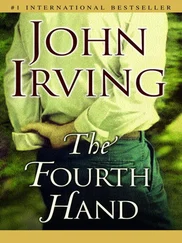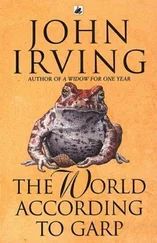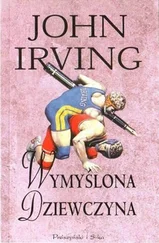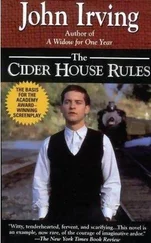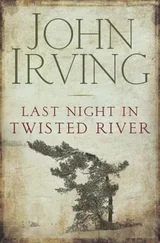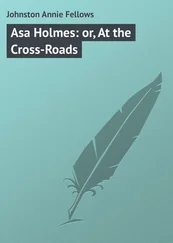“You were stepped on by an elephant while your father was buying cigarettes?” Farrokh asked. This certainly sounded like a tall tale, but the cripple listlessly nodded. “So I suppose your name is Ganesh—after the elephant god,” Dr. Daruwalla asked the boy. Without appearing to notice the doctor’s sarcasm, the cripple nodded again.
“It was the wrong name for me,” the boy replied.
Apparently, Vinod believed the beggar. “He is being a doctor,” the dwarf said, pointing to Farrokh. “He is fixing you, maybe,” Vinod added, pointing to the boy. But the beggar was already limping away from the car.
“You can’t fix what elephants do,” Ganesh said.
The doctor didn’t believe he could fix what the elephant had done, either. “Maaf karo,” Dr. Daruwalla repeated. Neither stopping nor bothering to look back, the cripple made no further response to Farrokh’s favorite expression.
Then the dwarf drove Dr. Daruwalla to the hospital, where one surgery for clubfoot and another for wryneck awaited him. Farrokh tried to distract himself by daydreaming about a back operation—a laminectomy with fusion. Then Dr. Daruwalla dreamed of something more ambitious—the placement of Harrington rods for a severe vertebral infection, with vertebral collapse. But even in prepping his surgeries for, the clubfoot and the wryneck, the doctor would keep thinking about how he might fix the beggar’s foot.
Farrokh could cut through the fibrous tissue and the contracted, shrunken tendons—there were plastic procedures to elongate tendons—but the problem with such a crush injury was the bony fusion; Dr. Daruwalla would have to saw through bone. By damaging the vascular bundles around the foot, he could compromise the blood supply; the result might be gangrene. Of course there was always amputation and the fitting of a prosthesis, but the boy would probably refuse such an operation. In fact, Farrokh knew, his own father would have refused to perform such an operation; as a surgeon, Lowji had lived by the old adage primum non nocere —above all, do no harm.
Forget the boy, Farrokh had thought. Thus he’d performed the clubfoot and the wryneck and, thereafter, he’d faced the Membership Committee at the Duckworth Club, where he had also lunched with Inspector Dhar, a lunch much disturbed by the death of Mr. Lal and the discomfort that D.C.P. Patel had caused them. (Dr. Daruwalla had had a busy day.)
And now, as he listened to the phone messages on his answering machine, Farrokh was trying to imagine the precise moment in the bougainvillea by the ninth green when Mr. Lal had been struck down. Perhaps when Dr. Daruwalla was in surgery; possibly before, when he’d encountered Dr. Aziz on the elevator, or one of the times when he’d said “Maaf karo” to the crippled beggar whose English was unbelievably good.
Doubtless the boy was one of those enterprising beggars who sold himself as a guide to foreign tourists. Cripples were the best hustlers, Farrokh knew. Many of them had maimed themselves; some of them had been purposefully injured by their parents—for being crippled improved their opportunities as beggars. These thoughts of mutilation, especially of self-inflicted wounds, led the doctor to thinking about the hijras again. Then his thoughts returned to the golf-course murder.
In retrospect, what astonished Dr. Daruwalla was how anyone could have gotten close enough to Mr. Lal to strike the old golfer with his own putter. For how could you sneak up on a man who was flailing away in the flowers? His body would have been twisting from side to side, and bending over to fuss with the stupid ball. And where would his golf bag have been? Not far away. How could anyone approach Mr. Lal’s golf bag, take out the putter and then hit Mr. Lal—all when Mr. Lal wasn’t looking? It wouldn’t work in a movie, Farrokh knew—not even in an Inspector Dhar movie.
That was when the doctor realized that Mr. Lal’s murderer had to have been someone Mr. Lal knew, and if the murderer had been another golfer—presumably with his own bag of clubs—why would he have needed to use Mr. Lal’s putter? But what a nongolfer could have been doing in the vicinity of the ninth green—and still not have aroused Mr. Lal’s suspicions—was at least for the moment quite beyond the imaginative powers of Inspector Dhar’s creator.
Farrokh wondered what sort of dogs were barking in the killer’s head. Angry dogs, Dr. Daruwalla supposed, for in the murderer’s mind there was such a terrifying irrationality; the mind of Dr. Aziz would appear reasonable in comparison. But then Farrokh’s speculations on this subject were interrupted by the third phone message. The doctor’s answering machine was truly relentless.
“Goodness!” cried the unidentified voice. It was a voice of such lunatic exuberance, Dr. Daruwalla presumed it was no one he knew.
For Once, the Jesuits Don’t Know Everything
At first Farrokh failed to recognize the hysterical enthusiasm that characterized the voice of the ever-optimistic Father Cecil, who was 72 and therefore easily panicked by the challenge to speak clearly and calmly to an answering machine. Father Cecil was the senior priest at St. Ignatius, an Indian Jesuit of unrelenting good cheer; as such, he stood in startling juxtaposition to the Father Rector—Father Julian—who was 68 years old and English and one of those intellectual Jesuits with a caustic disposition. Father Julian was so sarcastic that he was an instant source of renewing Dr. Daruwalla’s combined awe and suspicion of Catholics. But the message was from Father Cecil—therefore free of facetiousness. “Goodness!” Father Cecil began, as if offering a general description of the world he saw all around him.
What now? thought Dr. Daruwalla. Because he was among the distinguished alumni of St. Ignatius School, Farrokh was frequently asked to give inspirational speeches to the students; in previous years, he’d also addressed the Young Women’s Christian Association. He’d once been an active member of the Catholic and Anglican Community for Christian Unity and the so-called Hope Alive Committee. But such activities failed to interest him anymore. Dr. Daruwalla sincerely hoped that Father Cecil wasn’t calling him with a repeat request for the doctor to relate again the stirring experience of his conversion.
After all, despite Dr. Daruwalla’s past commitment to Catholic and Anglican unity, he was an Anglican; he felt uncomfortable in the presence of a certain overzealous, albeit small, percentage of the faithful followers of St. Ignatius Church. Farrokh had declined a recent invitation to speak at the Catholic Charismatic Information Centre; the suggested topic had been “The Charismatic Renewal in India.” The doctor had replied that his own small experience—the entirely quiet, little miracle of his conversion—didn’t compare to ecstatic religious experiences (speaking in tongues and spontaneous healing, and so forth). “But a miracle is a miracle!” Father Cecil had said. To Farrokh’s surprise, Father Julian had taken the doctor’s side.
“I quite agree with Dr. Daruwalla,” Father Julian had said. “His experience hardly qualifies as a miracle at all.”
Dr. Daruwalla had been miffed. He was quite willing to portray his conversion experience as a low-key kind of miracle; he was always humble when relating the story. There were no marks on his body that even remotely resembled the wounds on the crucified body of Christ. His was no stigmata story. He wasn’t one of those nonstop bleeders! But for the Father Rector to dismiss his experience as hardly qualifying as a miracle at all … well, this sorely vexed Dr. Daruwalla. The insult fueled Farrokh’s insecurities and prejudices in regard to the superior education of the Jesuits. They were not only holier than thou, they were more knowing than thou! But the message was about Dhar’s twin, not about the doctor’s conversion.
Читать дальше


